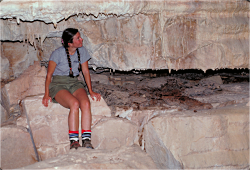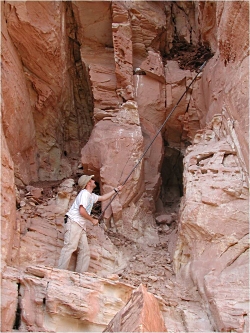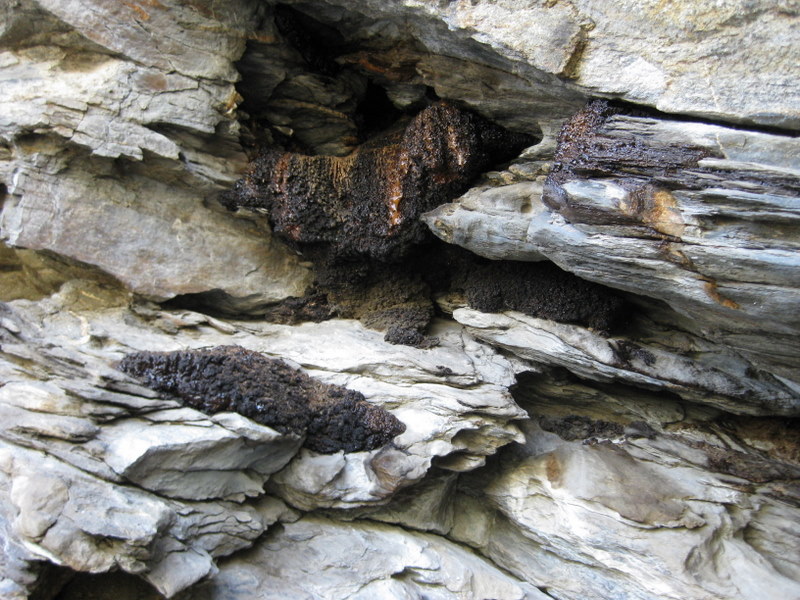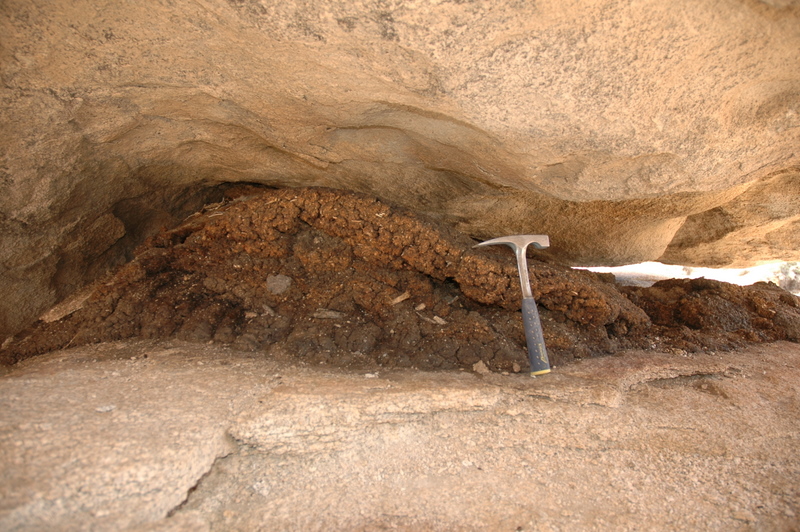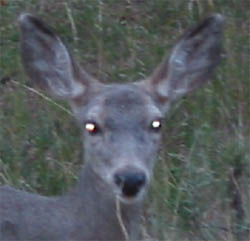
Photo Courtesy
Phil Myers (photographer, copyright holder)
Museum of Zoology, University of Michigan
This work is licensed under a
Creative Commons
Attribution-Noncommercial-Share Alike
3.0 Unported License.
Hi, I’m Holly Strand from Stokes Nature Center in beautiful Logan Canyon.
There’s a large paper wasp nest on display on a bookcase at the Nature Center. Last week, Anna and I noticed some strange noises emanating from it. It even seemed to move a little on the shelf. We carefully –and a bit nervously–approached to investigate. I picked up the nest and it began to shake vigourously. Then a live missile shot out of the opening. It was a chubby little squirrel with huge dark eyes. He jumped from the bookcase and went scurrying across the floor with Anna and I in hot pursuit. Then he scampered up to the top of a door frame. We tried to catch him with a cardboard box, but he spread his little legs out wide and went sailing over our heads, landing smoothly on floor across the room. And then he ran under the couch. We stood there in amazement. He wasn’t your normal squirrel—he was a flying squirrel!
The northern flying squirrel is one of two flying squirrels found in United States, the other being the southern flying squirrel . Northern flying squirrels occur in many of Utah’s mountainous areas, primarily in mature coniferous forests and riparian zones.
According to Mike Wolfe at the Utah State University’s College of Natural Resources, they aren’t exactly rare in Logan Canyon. In fact, they are active here throughout the year, but they’re completely nocturnal. So many people never see them and are surprised to find that we have them.
Flying squirrels don’t really fly. They glide. They have a loose fold of skin known as a patagium which runs along each side of the body from the ankle of the hind leg to the wrist of the foreleg. When they stretch this membrane and launch they instantly become a furry paraglider, capable of covering great distances using a small fraction of the energy it would take to run.
Rocky, as we called the nature visitor, proved very difficult to catch. In the end, we used a live trap baited with apples and sunflower seeds. On Thanksgiving morning, my husband and I found him sitting in it, wishing he were somewhere else. We took him up the canyon and released him. He scampered up a tree and seemed to regard us thoughtfully. On the way back to the car, I looked back once more and was lucky enough to see one last beautiful 20 ft glide from tree to tree.
Thanks to the USU College of Natural Resources for supporting research and development of this Wild About Utah topic.
For Wild About Utah and Stokes Nature Center, I’m Holly Strand.
Credits:
Images: Courtesy Washington Department of Fish and Wildlife and Phil Myers (photographer, copyright holder), Museum of Zoology, University of Michigan, licensed under CCA-Noncommercial-Share Alike 3.0 Unported License.
Text: Holly Strand, Stokes Nature Center
Sources & Additional Reading:
Flyingsquirrels.com [Accessed December 4, 2009]
Utah Division of Wildlife Resources. Utah Conservation Data Center. Species database. NORTHERN FLYING SQUIRREL. https://dwrcdc.nr.utah.gov/rsgis2/Search/Display.asp?FlNm=glausabr [Accessed December 04, 2009]
Malamuth, E. and M. Mulheisen. 1999. “Glaucomys sabrinus” (On-line), Animal Diversity Web. https://animaldiversity.org/accounts/Glaucomys_sabrinus/pictures/collections/contributors/phil_myers/classic/sabrinus1/ [Accessed December 04, 2009]

